The 8 most emblematic mountain passes of the Tour de France
Throughout its 111 editions, the Tour de France has traveled through many mountain passes that are now part of the collective imagination, here we bring you the most iconic ones.
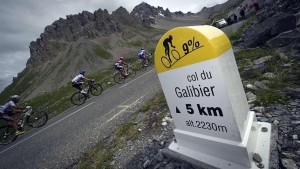
The most mythical climbs of the Tour de France
If something has made the Tour de France famous, it has been its incredible mountain passes in the Alps and Pyrenees, whose names are now part of popular culture, transcending even the sport of cycling itself.
However, despite being born in 1903, we had to wait until the 1910 Tour de France to see the first high mountain stage in the French race with that famous Luchon-Bayonne that is part of the history of this sport. Until then, only isolated ascents, some of great importance but nothing.
RECOMENDADO

When do helmets have to be changed? Do they have an expiration date?

Some reasons to stay away from the road in winter
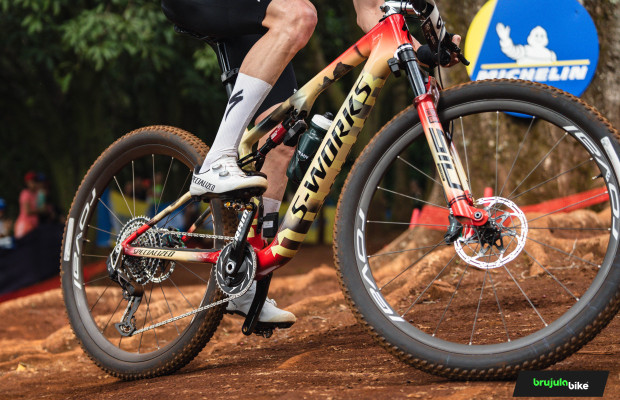
S-Works: what does it really mean and where does Specialized's most exclusive label come from?

The best apps for cycling and mountain biking

Black Friday 2025 cycling bargains: save on Garmin, POC, Maxxis and more

Black Friday Garmin 2025: the ultimate guide to choosing your GPS at the best price
That transformed the Tour de France forever, beginning to forge a legend that would have as protagonists the most impressive peaks of the country. These passes have now become pilgrimage sites for cycling enthusiasts eager to emulate their idols on the tough slopes of the most emblematic French mountain passes.
1. Tourmalet
If the Luchon-Bayonne was the first major high mountain stage of the Tour de France, the Tourmalet is the most emblematic point of that route. Even before that day, due to the adventures suffered by journalist Alphonse Steines to recognize it, walking under an intense blizzard. Later on, with episodes like the broken fork of Eugène Christophe that he had to repair with his own hands in the village forge.
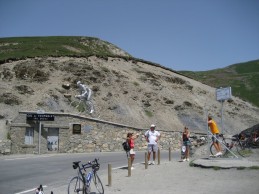
The Tourmalet is a long and tough pass. 17 kilometers with a manageable start that becomes harder to reach a constant 9% that barely gives respite and gradually wears down the strength of the cyclist trying to reach its 2,115 m of altitude.
Both sides have a similar toughness. The west, starting in Luz St. Sauveur, is more constant, and the east, starting in Ste. Marie de Campan, is gentler at the beginning but exacts the toll of the hard-earned meters just before reaching the ski resort of La Mongie with a section of ramps above 10%.
2. Galibier
With the high mountain passes open, the Tour de France did not hesitate, including the following year a stage in the Alps that crossed the monstrous Galibier. A colossus at 2,250 m of altitude that, preceded by the obligatory passage through the Col du Télégraphe, represents more than 35 kilometers of ascent.
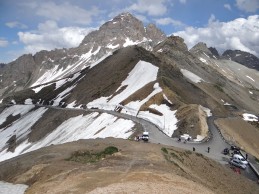
An ascent that, despite the reputation of the gentle slopes of the Alpine passes, challenges us from the 12 kilometers of the Télégraphe with entire kilometers at 7 and 8%, isolated ramps that exceed 10%.
The 5 kilometers of descent from the top of this first Col to Valloire are just a false respite before the remaining more than 18 km with a growing slope, endless straight sections towards Plan Lachat where the bike seems not to progress, and a final stretch where the hairpin turns climb on the rocky wall to suddenly scratch the remaining elevation and place the slope close to the psychological figure of 10% in what is undoubtedly the realm of high mountain.
3. Ballon de Alsacia
Before the Pyrenees and Alps made their appearance, in the year 1905 the Tour de France decided to push the cyclists further with a tough stage in the Vosges massif between Nancy and Dijon, near the border with Switzerland and Germany.
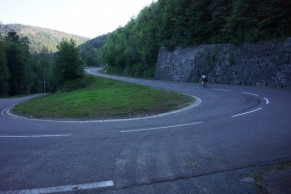
Although it was not the first pass of the Tour, as that honor goes to the Col de la République located in the Massif Central, a very gentle pass that the race crossed in its first two editions, on that occasion the riders had to face the first major difficulty of the race in the form of the Ballon de Alsacia.
A 9-kilometer ascent with gradients maintained around 7-8%, which for the bikes of the time must have been like facing a wall. In fact, the winner of this stage, René Pottier, who managed to complete the ascent without putting a foot down, finished the day exhausted and was forced to abandon the race the next day.
The race has not passed through its summit since 2005. Instead, another pass in the same mountain range, the Planche des Belles Filles, has gained prominence, even deciding the race in 2020.
4. L'Iseran
The highest pass in the Alps, at 2,770 m of altitude, could not be left out of this selection, if only for its impressive landscapes.
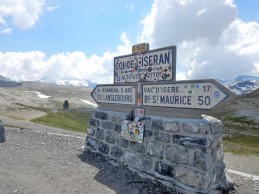
From either of its two sides, the south ascending from the Maurienne valley, or the north running through the Val d'Isère from Bourg Saint Maurice, it is an extremely long climb, quite sustained, always around 7-8% gradient and with increasing difficulty, combined with many kilometers above 2,000 m of altitude, making it a real challenge.
5. Mont Ventoux
The giant of Provence stands imposing when you travel on French roads and see how it rises above the surroundings without anything to overshadow it. A solitary peak, constantly battered by the mistral, and undoubtedly part of the collective imagination due to the tragic death of the British Tom Simpson in the 1967 Tour de France when he collapsed less than two kilometers from the finish line due to heat, alcohol, and amphetamines.
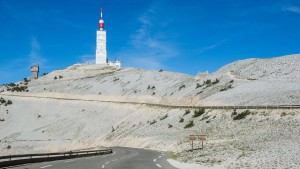
Today, thousands of cyclists ascend its slopes every year, especially its extremely tough side from Bedoin: 21 kilometers that start with gentle slopes allowing you to warm up, a middle section through an impenetrable forest, and 10 kilometers where the gradients rarely drop below 9%.
Then you reach Chalet Reynard where everything changes and the forest gives way to the iconic lunar landscape that characterizes this pass. There are 6 kilometers left, with gentler slopes around 7%, but where the wind usually mercilessly batters the determined cyclist.
6. Alpe d'Huez
Another pass that needs no introduction. The 21 hairpin bends that pay tribute to those who have conquered its slopes, where hundreds of thousands of spectators gather every time the Tour de France passes through and it is said that whoever wears the yellow jersey at its summit will also do so in Paris.
A pass that has given us epic moments like the furious attack of Carlos Sastre in the 2008 Tour which helped him win the coveted yellow jersey.
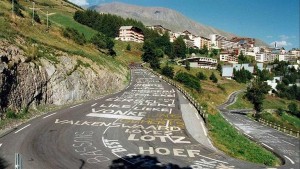
However, I will take away some of your illusions. Although it is a pass that every cycling enthusiast of mythical climbs must have on their list, it is not particularly beautiful in terms of landscape.
Its first ramp, as we leave Bourg d'Oisans, is brutal. 800 m until reaching the first of the 21 bends. From there, the gradient stabilizes around 8-9% and the climb, thanks in part to the excellent asphalt, becomes much more pedalable, alternating straight sections where the gradient slightly increases with almost flat curves that allow us to take a slight break.
The last 4 of its 13 kilometers, when we reach the village of Huez, lose some incline as we approach the ski resort that we have seen so many times on TV.
If you want advice, do not miss exploring the other sides of this mythical climb, especially La Sarenne which, unlike its famous side, is a visual spectacle.
7. Aubisque
We return to the Pyrenees to ascend another of its great colossi, also a pioneer in that famous Luchon-Bayonne of 1910, and where Octave Lapize's cry upon reaching the summit will remain in history: “Vous êtes des assassins! Oui, des assassins!”, “You are murderers! Yes, murderers!” in protest of the tremendous toughness of that first major mountain stage of the Tour de France.
Today, its roads are always full of cyclists who come amazed not only by the sporting challenge posed by its almost 29 kilometers if we ascend from Argelès Gazost linking it with the Soulor; or the 16 kilometers of the side that starts in Laruns.
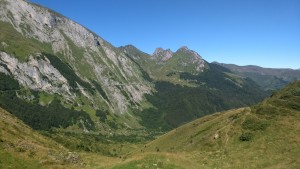
The imposing surroundings of the Cirque de Litor, the vertical rock walls under which the road winds between Soulor and Aubisque, are well worth the effort of the ascent.
If we face the Laruns side, we have 5 kilometers quite gentle to warm up, until the beautiful thermal town of Eaux Bones. From there, the gradient reaches a merciless 8-9% that remains relentless until the end.
On the Argelès side, we have to differentiate several sections. A start with a couple of tough kilometers that give way to a pleasant false flat climbing the Val d'Azun until reaching Arrens where there are 7 kilometers around 8% left to crown the Soulor. After that, a couple of kilometers in a clear descent leave us at the final part. 7 kilometers where the gradient progressively increases until reaching the 1,709 m that mark its watershed.
8. Izoard
We save for last the pass that the great champions have crossed alone. The one where Fausto Coppi, although in the Giro d'Italia and not in the Tour de France, became "Un uomo solo al comando". The one where Louison Bobet became a legend.
Here there is no doubt, the essential side of the Izoard is the one that starts in Château-Queyras with its 16 kilometers of tremendous toughness, with a section from the village of Arvieux straight, between bucolic meadows that seems endless and where the road does not seem to show the gradient that our legs perceive.
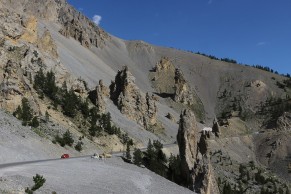
We then enter a wooded slope that adds meters of elevation with each hairpin curve, the gradient clearly fixed at 9% until reaching a small pass where, suddenly, the forest disappears and a small descent leaves us at La Casse Déserte. A lunar landscape and rocks forming whimsical shapes that are images that every cycling lover has in their mind.
There are only a couple of kilometers left to the summit where the toughness increases again and allows us to reach the 2,360 m that mark its watershed. On the other side, the side that starts in Briançon is not as tough or spectacular. However, it is a climb with a touch of toughness that is more pedalable and allows you to enjoy a fairytale environment.
You can check the detailed altimetry of these ascents on specialized websites like www.altimetrias.net or www.cyclingcols.com.
And for you, what is your favorite pass of the Tour de France? Tell us on our social media.